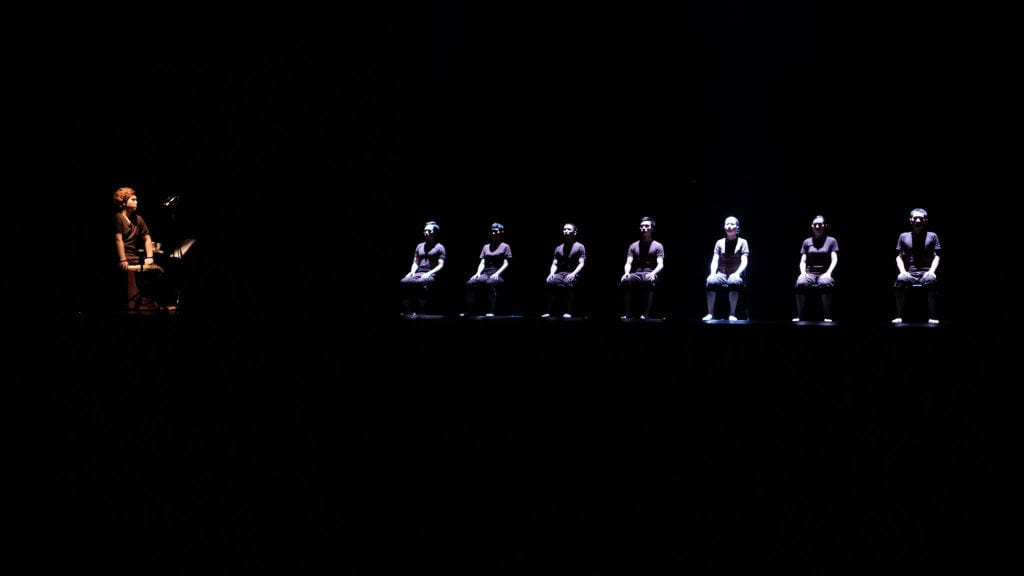Titus Andronicus 2.0, an Italian box performance, was presented by the Shu-wing Tang Theatre Studio in Hong Kong (founded as No Man’s Land in 1997 and renamed in 2009). A 2009 production invited to the 2012 World Shakespeare Festival at the London Globe, it has already won international acclaim, and the programme informs us that this “is an extremely revolutionary attempt to explore the unreleased potentials” of Shakespeare’s play and that “the experience is uplifted to a socially reflective and spiritually penetrating level”.
In fact, Shakespeare’s text disappears and is replaced with a narrative that “communicates” the thread of events of events in the play. Adapted by Ngam and based on the translation into Cantonese Chinese by Rupert Chan, this long text has no literary or poetic value.
Tang spent his formation years (1986-92) in France, where he was deeply influenced by Meyerhold’s theatre of convention and Grotowski’s poor theatre. Later on he was dubbed “the alchemist of minimalist theatre” by Metropop Magazine and started focusing entirely on the actors’ bodies, eliminating encumbering scenography and relying on his experience as yoga trainer.
In Titus, seven actors (four men and three women) take turns in reciting the narrative as well as some scarce dialogues, without embodying definite characters. They enter from the auditorium and, turning their backs to the audience, take off their colourful clothes and strip to black T-shirts and knee-high trousers. Then they sit on a row of chairs and start telling the story, each speaker lit as he/she takes over the relay. The text is sometimes accompanied by pipe and percussion improvisations played offstage and the whole performance is non-representational. The movements of the actors are mainly based on martial arts, meant as a bridge between Western and Eastern theatre. Rape is suggested by panting, Lavinia’s pain by moans, her maimed arms either by fists or by the actors’ placing their hands behind their necks or backs. The actors’ humming sounds like a mantra and that could also be meant as a cultural bridge. The scene in which they all speak together, creating an auditory chaos, is clearly inspired from Ionesco’s La Cantatrice chauve.
The chairs are the only props, used mainly to vary the positions of the bodies (including hopscotch), and then to form towering gates.
The conclusion of the narrative is that after all the havoc it is difficult to put Rome in order again, a cue that made the audience laugh. The actors jump back into the auditorium, take their coloured clothes, jump back on stage and circle in a procession, carrying their neatly-folded clothes as if they were the dead they are burying – the one good and original idea of this staging.
I have not been able to understand what the 2.0 in the title stands for, but I think it may be meant as “Titus to zero”, that is, going back to the sources, an idea that reviews of this production keep repeating. The programme also informs us that this is an unbiased contemplation on why we still make theatre today. I read this days after the show, but I remember asking myself while watching: cui prodest? Who profits if Shakespeare’s brilliant text is replaced with worthless story-telling?
The execution of the actors was flawless. Everything was perfectly rehearsed. It was impressive to note the extraordinary way in which they projected their unamplified voices and realise their diction was impeccable. But despite this formal perfection, there was not one ounce of emotion. However, against this dull mechanical rendition, the luminous talent of one of the actresses stood out. She must unfortunately remain anonymous, since there are no roles and no way to tell who is who. Nevertheless, this drop of delight lingered like a ray of hope after this unsatisfactory performance.



